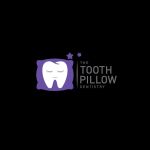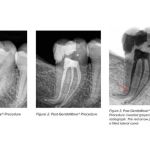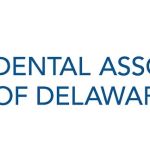How to Care for Your Teeth After Tooth Extraction
- 1. Immediate Care After Tooth Extraction
- 2. Managing Pain and Swelling After Extraction
- 3. Maintaining Oral Hygiene During Recovery
- 4. Eating and Drinking After Tooth Extraction
- 5. Avoiding Complications During Healing
- 6. Follow-up Care and Check-ups
- 7. When to Seek Professional Help
- 8. Teeth Care Products to Aid Recovery
1. Immediate Care After Tooth Extraction
After a tooth extraction, it is essential to follow proper care instructions to ensure a smooth recovery. The first few hours after the procedure are crucial in preventing complications. Immediately after the extraction, bite gently on a piece of gauze to control bleeding. Keep the gauze in place for at least 30 minutes to ensure a clot forms at the extraction site. Avoid spitting or using a straw during this period as it can dislodge the clot and hinder the healing process.
You may also experience some swelling and discomfort during the first 24 hours. Applying an ice pack to the outside of your cheek near the extraction site can help reduce swelling and numb the area. Remember to take any prescribed medication as directed to control pain and prevent infection.
2. Managing Pain and Swelling After Extraction
Pain and swelling are common after a tooth extraction, but they can be managed effectively. Swelling usually peaks within the first 48 hours, and you should continue applying ice packs during this period. After the first day, you can switch to warm compresses if it helps reduce the discomfort.
Over-the-counter pain relievers like ibuprofen or acetaminophen can be used to manage mild to moderate pain. However, always follow the dosage instructions or take any prescription pain medication recommended by your dentist. If the pain becomes severe or persists longer than expected, it’s important to contact your dentist for further guidance.
3. Maintaining Oral Hygiene During Recovery
Maintaining oral hygiene after tooth extraction is essential, but it’s important to be gentle and avoid disturbing the healing area. You can brush your teeth as usual but be careful around the extraction site. Avoid brushing the extraction area directly for the first few days, as this could cause irritation or dislodge the clot.
After the first 24 hours, you can begin rinsing your mouth with warm salt water to help keep the area clean. Saltwater is an excellent natural disinfectant and can aid in the healing process. Make sure to rinse gently to avoid disrupting the healing tissues. Your dentist may also recommend an antimicrobial mouthwash to prevent infection.
4. Eating and Drinking After Tooth Extraction
The first few days after tooth extraction require some adjustments to your diet. During the initial 24 hours, stick to soft, cool foods and avoid hot drinks that may irritate the wound. It’s also important to avoid hard, crunchy, or sticky foods that can potentially cause discomfort or damage to the healing area.
Make sure to drink plenty of water to stay hydrated, but refrain from using straws as the suction can disturb the blood clot. After the first few days, you can gradually reintroduce more solid foods into your diet, but continue to avoid anything that requires vigorous chewing until the extraction site is fully healed.
5. Avoiding Complications During Healing
To ensure proper healing after tooth extraction, it's vital to avoid certain activities that can lead to complications. Refrain from smoking, as it can hinder the healing process and increase the risk of developing a dry socket. Similarly, avoid strenuous physical activities and heavy lifting for a few days, as these actions can increase blood pressure and disrupt the healing site.
Additionally, avoid touching or poking the extraction area with your fingers or tongue, as this can introduce bacteria and increase the risk of infection. Always follow your dentist’s aftercare instructions carefully to minimize the chances of complications and ensure optimal recovery.
6. Follow-up Care and Check-ups
After your tooth extraction, your dentist will likely schedule a follow-up appointment to ensure that the healing process is progressing properly. These check-ups allow your dentist to monitor the extraction site, remove any stitches if necessary, and assess the overall healing.
Make sure to attend these follow-up appointments, even if you’re feeling better. They provide an opportunity to address any concerns or complications that may arise during the healing process. Early intervention can prevent long-term issues and ensure your recovery is as smooth as possible.
7. When to Seek Professional Help
While most tooth extractions heal without any issues, there are signs that may indicate a complication. If you experience severe pain, excessive swelling, or notice a bad taste or odor from the extraction site, these could be signs of an infection or dry socket, and you should seek professional help immediately.
Additionally, if the bleeding does not subside after several hours or if you experience fever or persistent discomfort, it’s important to contact your dentist as soon as possible to avoid further complications.
8. Teeth Care Products to Aid Recovery
During your recovery, using the right oral care products can aid the healing process and help maintain good oral hygiene. Consider using a soft-bristled toothbrush to avoid irritation around the extraction site. You can also use antiseptic mouthwashes recommended by your dentist to prevent infection and promote healing.
Additionally, there are various teeth care products designed specifically for post-extraction recovery, such as gentle fluoride toothpaste and saline rinses that support healing and prevent discomfort. Speak with your dentist about the best products for your specific recovery needs.







 All Smiles By Design4.0 (549 review)
All Smiles By Design4.0 (549 review) The Tooth Pillow Dentistry0.0 (0 review)
The Tooth Pillow Dentistry0.0 (0 review) Bauman Endodontics Richard Bauman DMD4.0 (197 review)
Bauman Endodontics Richard Bauman DMD4.0 (197 review) Dental Associates of Delaware-Hockessin4.0 (247 review)
Dental Associates of Delaware-Hockessin4.0 (247 review) Saluté Dental - Woodbury5.0 (1513 review)
Saluté Dental - Woodbury5.0 (1513 review) Affordable Dentures & Implants4.0 (502 review)
Affordable Dentures & Implants4.0 (502 review) The Importance of Oral Health Education During Pregnancy for a Healthy Pregnancy
The Importance of Oral Health Education During Pregnancy for a Healthy Pregnancy Best Tips for Brushing Your Teeth Properly for Healthy Gums: Essential Techniques for Oral Health
Best Tips for Brushing Your Teeth Properly for Healthy Gums: Essential Techniques for Oral Health Why Skipping Dental Checkups Can Lead to Bigger Oral Health Problems
Why Skipping Dental Checkups Can Lead to Bigger Oral Health Problems Advantages of Porcelain Dental Restorations
Advantages of Porcelain Dental Restorations How Can Diabetes Cause Tooth and Gum Problems? Preventing and Managing Oral Health Issues
How Can Diabetes Cause Tooth and Gum Problems? Preventing and Managing Oral Health Issues Healthy Habits for Promoting Good Oral Health and Hygiene: Tips for a Healthy Smile
Healthy Habits for Promoting Good Oral Health and Hygiene: Tips for a Healthy Smile